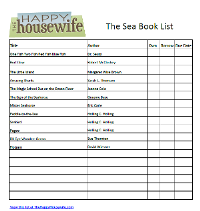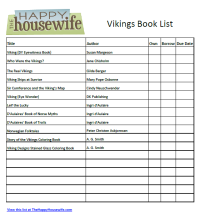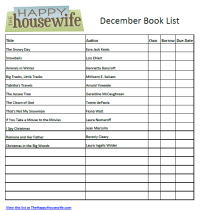The following is a post from Tabitha.
Sometimes it helps everyone in the family to know what to expect when. In some homes, this can be done with daily routines. This can also be known as scheduling, or whatever you want to call it. It doesn’t need to be by the day… look at your weeks, months, and years, as well.
How do you find it?
When we started formal homeschooling (more than just including learning activities in our playtime each day), I found that it helped my oldest son to focus when school was done about the same time every day. We found a time when little siblings were napping and the others were distracted or busy. It was also a time that was not usually interrupted by calls, visits, or appointments. For the most part, we stuck with this routine for a few years while we were learning together.
Later on, as we added more ‘students’ to our routines, we had other goals we wanted to meet. We added a devotional time with all of us together. This really got us on the right track each day. It wasn’t always exactly at the time I wanted, but it was before we started our other learning activities and it even included the smallest siblings.
1. What things are working for you right now?
What we did is note what times worked well for some of our every day activities. For example, things that worked for all ages (like reading aloud together or even science experiments) we did at times during the day when the younger ones were alert and happy. When the little ones were resting or napping, we did homeschooling activities that needed more one-on-one time with Mom, like math. Looking back, we didn’t really have a set time for any particular subject or activity other than our devotional. It was more a general outline of how the day would go. Everyone knew what to expect each day.
2. Look at both daily and weekly routines, as well as things that happen less frequently.
Another helpful idea is to look at days of the week and find your niche there. Is there a day that works well for outdoor topics or out of the home activities? What about field trips or your co-op? Don’t try to do other things on those days, but maybe work on planning around that day. Leave room in your ‘plans’ for breaks. Our family has church activities on Wednesday nights that involve at least half of us. This changes a lot of what we try to get done by evening.
3. If you grow out of something or it doesn’t work, adjust!
At some point in time maybe about 5 years ago, our devotional time changed to evenings when Dad could participate too. I miss that time with the kids, but our changing family needs made evening the better choice. I do see a need for something in the morning to get us all going in the same direction, but we haven’t found what works yet. See what works for you, and when your family changes, change the routine.
4. Drop the whole thing if necessary.
There are times when it doesn’t work. The first example that comes to mind is summer! Possibly the holiday season as well. Sometimes when you have an ongoing commitment that is short term, the routine needs to be abandoned. You may work naturally into a new routine, or your family may work well on their own schedule.
My oldest right now worked out his own schedule to finish his courses by the end of the year (an example of a yearly schedule) and knows what he needs to do each day to meet his goals. He doesn’t need me to tell him which days to do what, or what time to finish, or what order to complete it in. Not every student is like this, however, and I see a lot of formal planning in my future, looking at some of my children.
5. Keep your goals in mind.
Just like my son, know where you are going and figure out a way to get there. Is a schedule or routine necessary? No. Can it be helpful? Yes. My 4 and 5 year olds like knowing when they get a turn on the computer, when they are having their meals, and what they need to do at certain times of the day. It really helps them get going in the morning, and that same routine helps them settle down at night as they go through what they know we do every night before bedtime. As an added bonus, they start learning how to tell time if we make that part of their routine.
Be consistent. Know your children. Know your family. Know your goals. Then see where the daily rhythms of your life take you, whether it be on a schedule, routine, or just a vague pattern that gets you where you want to go.



























































